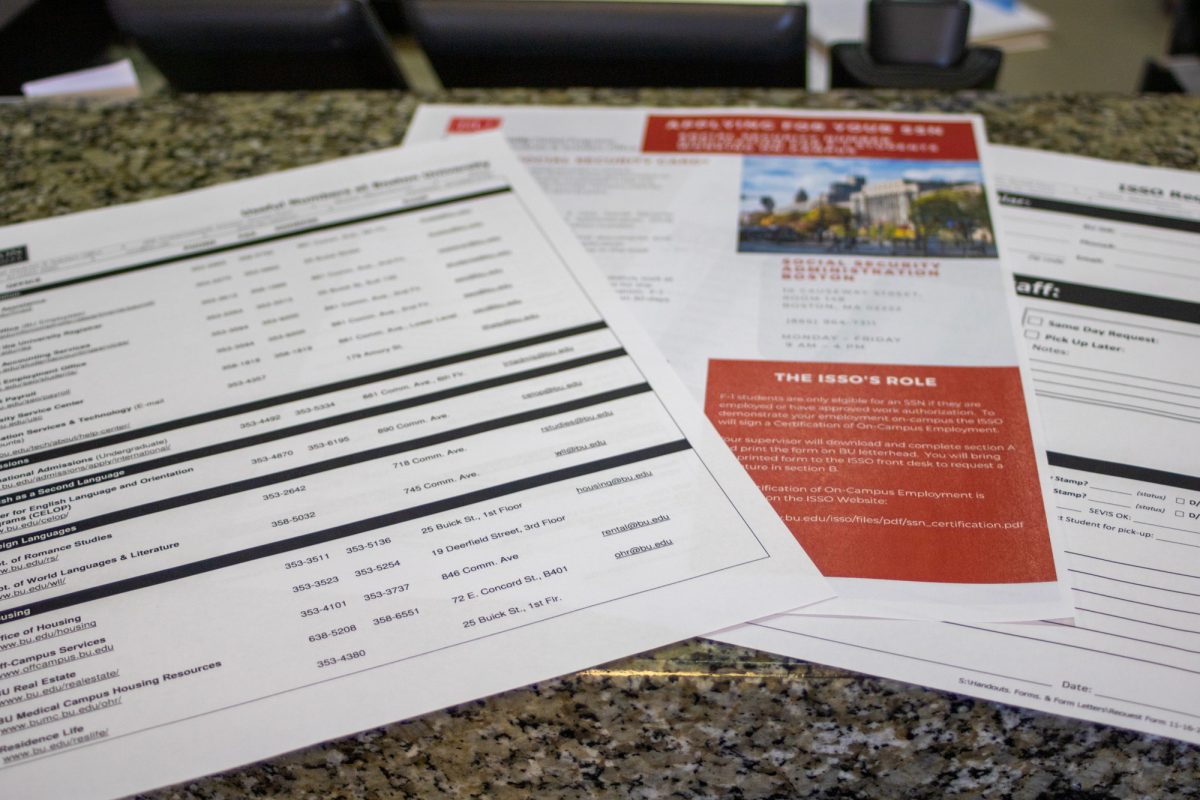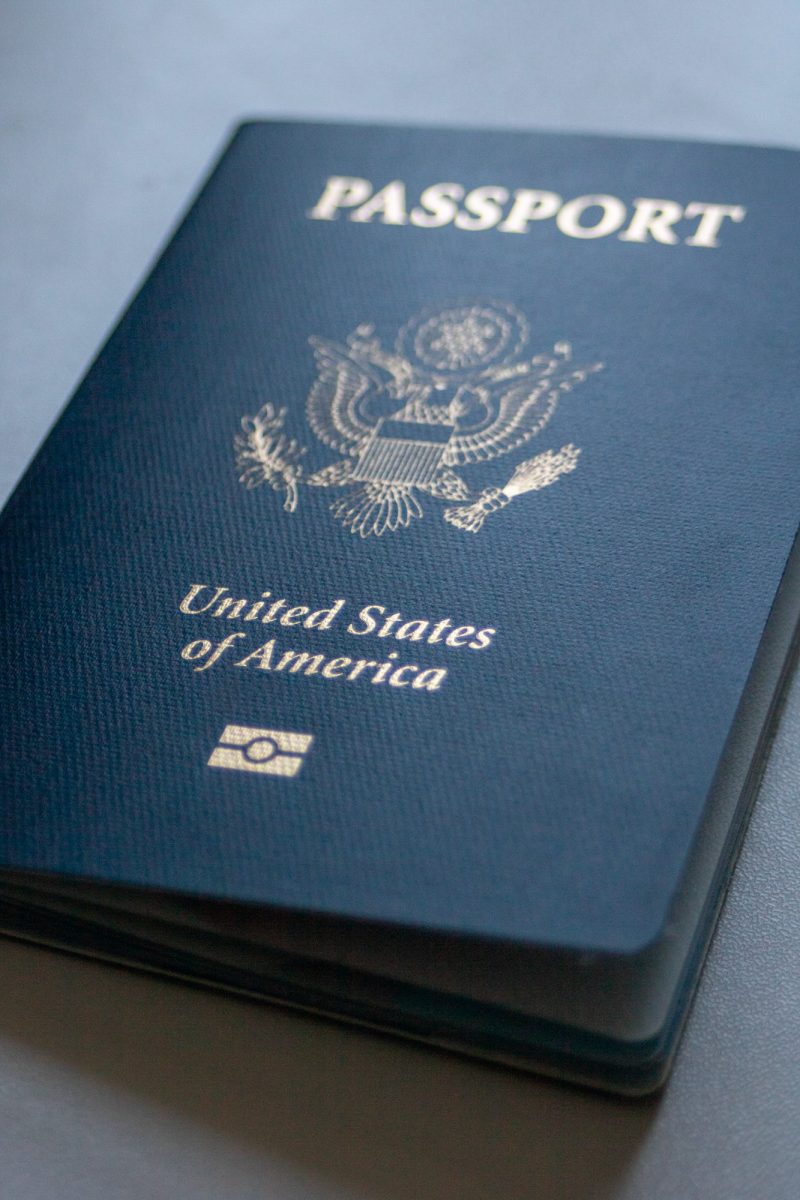Many cold and allergy sufferers rely on well-known over-the-counter medicines like Sudafed, Tylenol Sinus and Nyquil to relieve congestion and other annoying symptoms. But this cold season, customers may be in for a surprise at the drugstore when they find a plastic placard in place of their favorite brand of decongestant.
A new law that took effect nationwide in September 2006 bans over-the-counter sale of cold medicines that contain pseudoephedrine, according to the Food and Drug Administration website. The Combat Methamphetamine Epidemic Act of 2005 allows these medicines to be sold behind the counter and limits the amount of pseudoephedrine a person can purchase per month, according to the website. Methamphetamine, also known as crystal meth or speed, is a highly addictive stimulant that can be manufactured in makeshift laboratories using common household chemicals, according to a U.S. Drug Enforcement Administration fact sheet.
The act was included as part of the PATRIOT Act signed by President George Bush on March 9, 2006 and is designed to provide a “system of controls regarding the distribution and sale of drug products that can be used in the illicit production of methamphetamine,” according to the FDA website.
Customers wishing to purchase medicines that contain pseudoephedrine must present photo identification. Stores must use logbooks that record the customer’s name, address, product purchased, and the date and time of the sale, according to the FDA website. The stores must keep purchasers’ personal information on record for at least two years.
Because pseudoephedrine can be used to make illegal drugs, many companies have reformulated their products to exclude pseudoephedrine. For example, Sudafed, which many cold sufferers loyally use as their nasal decongestant of choice, is now called Sudafed PE. In Sudafed PE, the active ingredient is phenylephrine, not pseudoephedrine.
A LESS EFFECTIVE REPLACEMENT?
CVS Pharmacy Corporate Communications Manager Mike DeAngelis said some customers have told the store that phenylephrine products do not last as long as pseudoephedrine products.
While phenylephrine has been a common ingredient in many nasal decongestant sprays for years, University of Florida pharmacists have found that phenylephrine is “poorly absorbed into the bloodstream and will not work as well as medications containing pseudoephedrine” at the recommended FDA administered dosage level, according to a July 19, 2006 article in the University of Florida News.
Dr. Randy Hatton, a pharmacist at the University of Florida, told the Daily Free Press that he and his colleagues used “meta-analysis,” a technique where the results of several studies are compared. They concluded that the recommended FDA dosage of 10 grams of phenylephrine was ineffective.
“But it did show that a higher dose might be effective if we are looking at the issue of ethicacy,” said Hatton. “If it works, which we don’t think the evidence supports right now, it would only work for four hours. At most it’s going to work for four hours. Pseudoephedrine can last 12 hours. I think there is even a 24 hour form.”
Hatton said medicines containing phenylephrine — instead of pseudoephedrine — were created purely for “convenience for the manufacturing perspective.”
“Manufacturers thought this would decrease their sales, and they wanted to keep something in front, so that’s why they made phenylephrine available,” Hatton said, adding he does not think most consumers know the difference between the two drugs.
“Even the packaging is made to look similar. I would say most consumers don’t even notice the difference,” Hatton said.
Hatton, along with three other colleagues from the University of Florida, filed a citizen’s petition with the FDA to “reevaluate the effectiveness of the phenylephrine.” He said while the FDA has a six-month reply period, he does not foresee anything happening until at least next cold and flu season, if anything happens at all.
“I don’t know if that’s a terrible thing, because this is not a safety issue rather than an ethical issue,” Hatton said. “I think that most people don’t even know that [medicines containing pseudoephedrine are] available behind the counter. I think they’ll go to the pharmacy and pick one that’s on the shelf. They aren’t even going to know to ask for it behind the counter.”
Hatton said the issue relates to customer expectations.
“The only harm is lack of treatment, and in most part, this is not a critical treatment,” Hatton said. “Especially when purchasing a drug, when you purchase a drug, you expect that drug to do something. We are trying to say that we need additional science. Manufacturers are trying to say that, ‘No, this is fine.'”
While Hatton said many of the studies he and his colleagues evaluated were old, he cited a recent study conducted on Claritin D — which still contains pseudoephedrine and is available behind the counter — that found phenylephrine to be less effective than pseudoephedrine.
Dave Morgan, a consultant for the American Pharmaceutical Association, recommends that people try the new reformulated product. If they find it to be less effective, then they can purchase Sudafed and other pseudoephedrine drugs behind the counter, he said.
Morgan said the studies done on the effectiveness of phenylephrine recommend the FDA administer a dosage of 25 milligrams instead of the current dosage of 10 milligrams.
“The jury is still out on how effective it is,” Morgan said. “The company says it is, but people have been finding it isn’t. It doesn’t last as long, so you may have to take it more frequently.”
CONSCIOUS CONSUMERISM
Morgan said the main lesson to be learned is that consumers should consult their pharmacist on what medication will best relieve their symptoms.
“It’s an opportunity for the pharmacist to get involved, to open up some dialogue and see what they need,” Morgan said.
Morgan said he does not suspect pharmacists mind administering the drugs behind the counter.
“I don’t think people, in general, mind, but it’s kind of giving up your privacy, like you have to show your license,” Morgan said. “The other alternative would be to just remove it totally from the market, which probably wouldn’t be a good alternative because people are saying this phenylephrine isn’t working so well.”
Pseudoephedrine and phenylephrine are similar drugs, said Dr. David McBride, Boston University’s Director of Student Health Services.
“They are both medications that attach to a receptor on blood vessels and cause constrictions,” McBride said. “This helps congestion because dilation of blood vessels is part of the issue that creates congestion.”
McBride said health services employees might recommend that students use pseudoephedrine-containing products for congestion.
“The provider or nurses would give the student a couple of small packets to use until they could get to a pharmacy to buy more,” he said.
College of Communication senior Amanda Knorr said she has no problem with Sudafed being available only behind the counter.
“It is not incredibly inconvenient for me to show my license to someone in order to get the proper medication,” she said. “There are a lot of Sudafed pills in a package, and I don’t think a person would need more than that during the time they were sick.”
Mike Buludis, the CVS shift supervisor at 900 Commonwealth Ave., said customers can obtain pseudoephedrine products at CVS without much hassle.
“It takes me not even a minute to fill out the information,” Buludis said, referring to the customer information he must record in a logbook each time a customer asks to purchase a medicine containing pseudoephedrine.
Buludis said customers can purchase 3.6 grams of pseudoephedrine per visit, with a limit of 9.6 grams purchased per month.
“People who are going to make it are going to steal it because it’s expensive,” Buludis said. “I think it’s up to $10 for a box of Sudafed, so to make enough for a decent amount of meth, it’s going to be pretty expensive. So I think having it this way is pretty effective.”













































































































